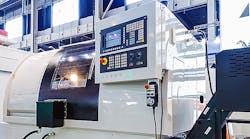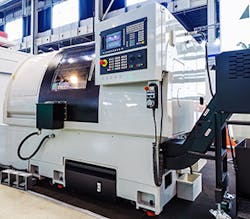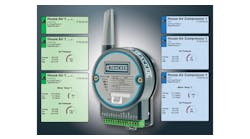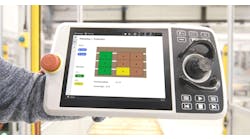Most of us understand how Smart Manufacturing can improve operational efficiency across the board. What many manufacturers don't consider is the resulting improvement in energy efficiency that also can be achieved. Not only is this next-gen approach to production planning and execution leading to heightened productivity and output, but it's also paving the way for “greener” operations in the near future.
“Smart” manufacturing is a technology-driven approach that applies and leverages Internet-connected machinery to monitor production processes. The goal is to identify opportunities for automating operations and to access and apply data analytics, to improve manufacturing performance.
"Smart manufacturing" is a concept for industrial operations that emphasizes applying and leveraging Internet-connected machinery to monitor manufacturing processes. The goal is to identify opportunities for automating operations and to access and apply data analytics, and thus to improve manufacturing performance.
Providing a framework for control — More directly, Smart manufacturing provides greater automation with real-time monitoring and the ability to intervene if necessary. By collecting and analyzing data across all of your organization’s factories and warehouses, you'll have a better understanding of the most energy-intensive processes. This information can be used to cut unnecessary activities or improve those that are critical to your daily operations.
You'll also have greater control over how you use your human workforce. By assigning workers to the most important tasks and leaving the menial work to the advanced robotics and artificial intelligence of Smart manufacturing, many manufacturers have already realized greater efficiency. Couple this with the lower emissions of newer machines and increased environmental regulations, and there is some significant potential to transform an energy-hogging process into a benchmark of efficiency.
Bolstering predictive analysis — Manufacturers’ increasing reliance on predictive analysis has led to greater equipment longevity and lower repair costs. Smart machines are able to identify potential bottlenecks, errors or other issues, and inform the operators of needed repairs. In cases of extreme emergency, some machines can shut down automatically, to avoid further damage or injury.
Predictive analysis works well on machines like air compressors, which still require some amount of human interaction. By collecting and analyzing data over the course of time, operators can optimize networked air-compressor usage in alignment with the standards and trends of Smart manufacturing. Not only will this reduce the amount of downtime involved with such equipment, but it also will maximize the energy efficiency of your hardware.
Streamlining operating processes —Day-to-day operations benefit from Smart manufacturing, too. Implementing RFID tracking chips improves system communications, product tracking, and supply-chain management. The use of standardized pallets or storage bins can eliminate shortcomings in inventory control, and introducing alternate packing materials can help drive sustainable operations.
All of these techniques contribute to operations that are less wasteful and more efficient.
Increased technological integration also reduces the amount of overall waste produced by your facility. This lends itself further to the sustainability movement, green operations and improved energy efficiency across the board.
Bridging the gap with technology — To get the most out of Smart manufacturing, it's important that you embrace the Industrial Internet of Things and all it has to offer. Although IIoT is still a developing reality, the infrastructure being built now will continue expand and evolve to guide businesses in the 21st century.
We don't have to wait to benefit from the IIoT, though. Modern consumers are already using smart thermostats and connected appliances to regulate temperatures in tandem with changing weather conditions or adjust lighting based on the time of day. Similar products and systems can be installed in our modern factories and warehouses to achieve the same effect.
Embracing Green, Smart manufacturing — Manufacturers’ recent embrace of green and sustainable technologies and processes is more than a trend. Many studies and demonstrations have shown these efforts can have a significant impact on the energy efficiency of plants and organizations. Apart from improving your reputation among the local community, embracing eco-friendly and sustainable operations can give you an edge over any competitors that have yet to recognize the increasing advantages available to all manufacturers.












